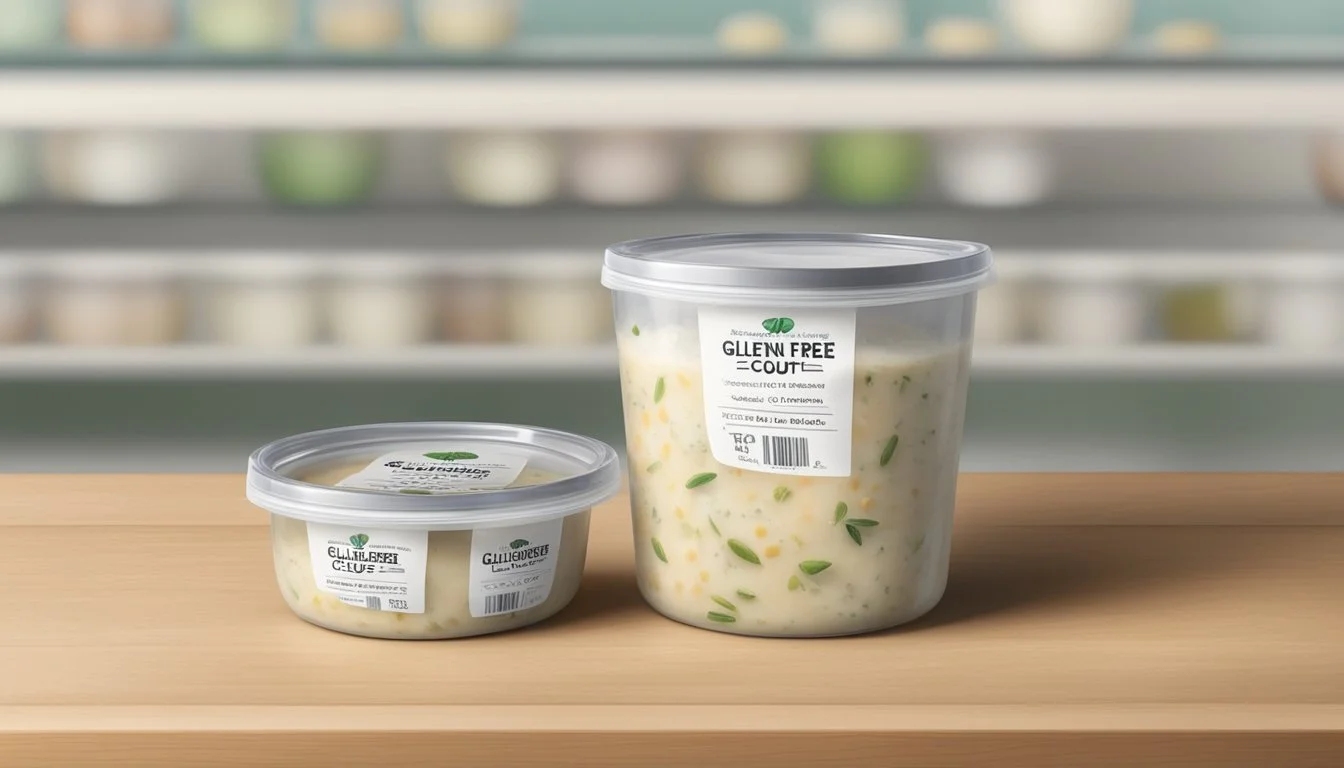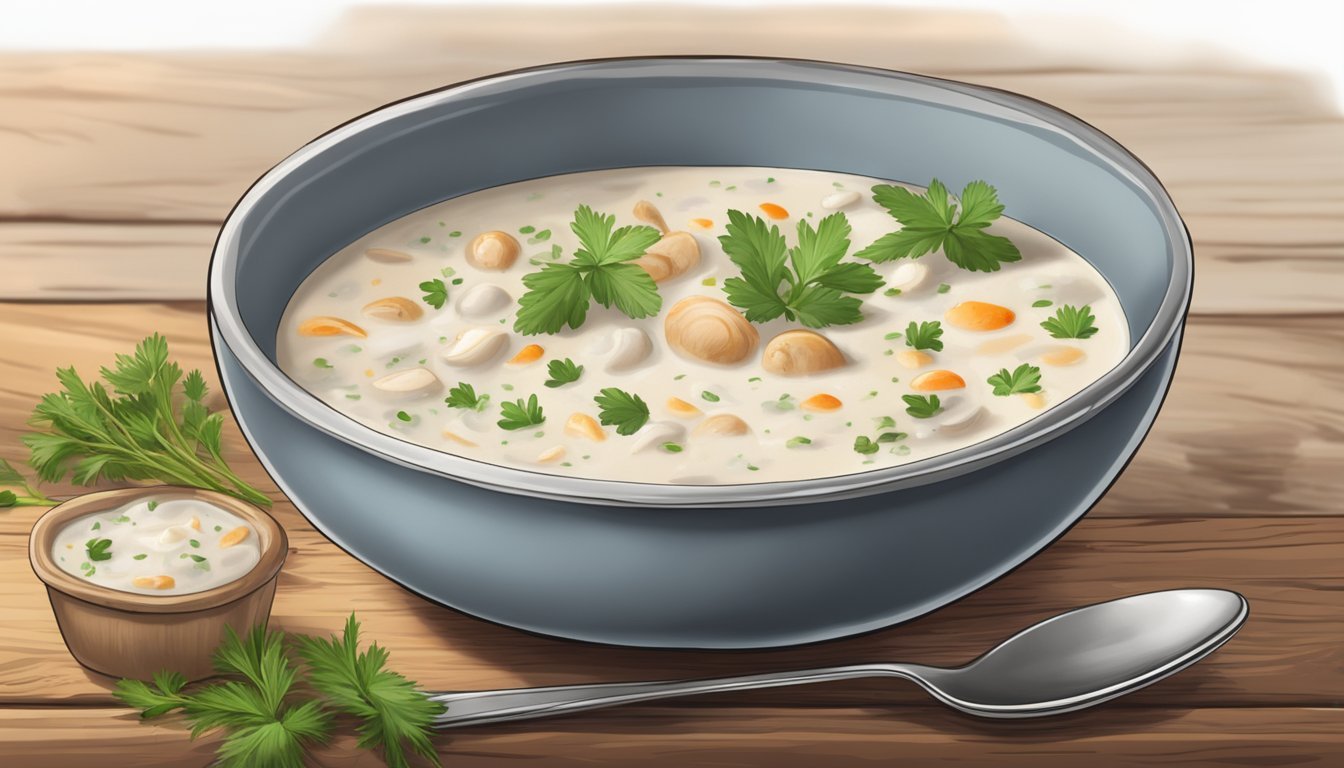How Long Does Gluten-Free Clam Chowder Last?
Storage Tips and Shelf Life
Enjoying a warm bowl of gluten-free clam chowder is a comforting treat, but how long can you store this delicious meal? Gluten-free clam chowder typically lasts 3 to 4 days when stored in an airtight container in the refrigerator. This ensures the rich flavors and creamy texture remain fresh and enjoyable for a few days after cooking.
For those who want to extend the shelf life of their chowder, freezing is an excellent option. Properly stored in the freezer, gluten-free clam chowder can last up to 2 to 3 months. Thawing and reheating it carefully helps maintain its original taste and consistency, providing a convenient meal for those busy days.
It's important to note that different recipes might have slight variations in staying fresh, depending on ingredients and preparation methods. Paying attention to storage tips and adhering to recommended timelines allows one to savor every spoonful without compromising on safety or quality.
Understanding Gluten-Free Clam Chowder
Gluten-free clam chowder requires careful selection of ingredients to ensure it meets dietary restrictions. Key components include clams, various thickeners, and a mix of seasonings and vegetables, all chosen to maintain the dish's creamy, savory profile without containing gluten.
Defining Gluten-Free
Gluten-free means excluding the protein gluten, which is found in wheat, barley, and rye. This is essential for those with celiac disease or gluten sensitivity. Ingredients like gluten-free flour or cornstarch are used for thickening instead of traditional wheat flour.
Foods labeled gluten-free must contain less than 20 parts per million (ppm) of gluten. This careful certification ensures safety for people with allergies or sensitivities.
Ingredients in Gluten-Free Clam Chowder
Key ingredients include clams, potatoes, cream, and bacon, which provide the base flavors. Onion, celery, and garlic add depth, while clam juice and clam broth enhance the seafood flavor.
To thicken the chowder, cornstarch or gluten-free flour is used. Alternate milk options like coconut milk or almond milk can be used for a dairy-free version. Fresh herbs and seasonings balance the richness of the dish.
The Role of Clams in Clam Chowder
Clams are vital for the characteristic seafood taste of clam chowder. They can be used in different forms such as minced clams or canned clams. These shellfish are rich in protein and add a distinct seafood flavor to the chowder.
Clam juice and clam broth are often included to intensify the flavor. The clams should be cooked gently to avoid becoming tough, ensuring the chowder remains flavorful and tender.
How to Prepare Gluten-Free Clam Chowder
Preparing gluten-free clam chowder involves selecting gluten-free ingredients, using proper cooking techniques, and following a well-crafted recipe. This ensures a rich and creamy dish that meets dietary needs while delivering traditional flavors.
Gluten-Free Clam Chowder Recipe
Begin by gathering the necessary ingredients: diced bacon, chopped onions, celery, gluten-free flour, milk or coconut milk, and clams. Heat olive oil in a pan and fry the bacon for 4-5 minutes. Add the onions and celery, cooking until they become soft and translucent. Stir in the gluten-free flour to create a roux, cooking for another 2 minutes.
Transfer the mixture to a saucepan or Dutch oven, adding the milk and clams. Mix well and bring to a boil. Lower the heat, let it simmer, and cook gently for about 30 minutes. The starch thickens the chowder, making it creamy. Serve hot, optionally in potato bowls, accompanied by gluten-free breadsticks.
Cooking Techniques and Equipment
A variety of equipment is essential for making gluten-free clam chowder. A pan is used initially to fry bacon and vegetables, while a saucepan or Dutch oven is ideal for simmering the chowder. These tools ensure even heat distribution and consistent cooking.
Key cooking techniques include creating a roux with gluten-free flour, which thickens the soup. Simmering at a low temperature allows the flavors to meld without overcooking the ingredients. Stirring occasionally prevents the chowder from sticking to the pot and forming lumps.
By selecting the right ingredients and following these methods, one can prepare a delicious, gluten-free version of traditional clam chowder.
Storage and Shelf Life
Proper storage methods and accurate shelf life estimates are essential for maintaining the quality and safety of gluten-free clam chowder.
Proper Storage Methods
To extend the life of gluten-free clam chowder, it should be stored in airtight containers. This prevents exposure to air and contaminants. Refrigeration at temperatures below 40°F (4°C) is critical. Glass or plastic containers with tight-fitting lids are ideal for this purpose.
Freezing is another viable option for longer storage. Pour the chowder into freezer-safe containers, leaving some space at the top to allow for expansion. Label containers with the date before placing them in the freezer. For best quality, consume frozen chowder within 2-3 months.
Determining Shelf Life
Refrigerated gluten-free clam chowder generally lasts 3 to 4 days. The ingredients, such as dairy, can spoil quickly even when stored properly. Always check for signs of spoilage like an off smell, change in texture, or mold.
Frozen clam chowder lasts longer – up to 3 months. However, texture and flavor may degrade over time. When ready to consume, thaw the chowder in the refrigerator overnight, not at room temperature, to maintain its quality and safety.
Attention to storage conditions and prompt consumption ensures the chowder remains delicious and safe to eat.
Tips for Serving and Enhancements
Enhancing and serving gluten-free clam chowder can elevate its taste and presentation significantly. Incorporate elements like bread bowls, fresh garnishes, and sides for a memorable dining experience.
Serving Suggestions
Using bread bowls is an excellent way to serve gluten-free clam chowder. Ensure the bread chosen is gluten-free to keep the dish compliant. This method adds an edible container that soaks up the rich flavors of the chowder.
Garnishing ensures the soup looks appetizing and adds subtle enhancements in flavor. Fresh chopped parsley and chives provide a splash of color and a fresh taste. You can also sprinkle crumbled bacon or a touch of Old Bay seasoning for additional flavor.
For sides, consider options like gluten-free breadsticks, garlic knots, or a small salad. These balance the richness of the chowder and provide textural contrast.
Enhancing Flavor and Texture
Creating depth in flavor can be achieved by adding aromatics such as bay leaves during cooking. These leaves enhance the broth with a subtle herbal note that complements the clams.
For a creamy texture, be cautious not to overcook the heavy cream, which could cause separation. Instead, slowly stir in the cream towards the end of cooking and allow it just enough time to heat through.
Adding a slurry of cornstarch and cold milk can help thicken the chowder without using gluten products. This technique ensures a smooth, rich consistency.
Small touches like a hint of black pepper or a mild dash of white wine can enhance flavor complexity. Each addition should be balanced to avoid overpowering the natural taste of the clams.
Health and Nutritional Considerations
Gluten-free clam chowder provides various health benefits and requires an understanding of potential allergies and sensitivities to ensure it is a safe option for everyone.
Understanding the Health Benefits
Gluten-free clam chowder offers several health benefits. Firstly, it is suitable for individuals with celiac disease or gluten intolerance, allowing them to enjoy a comforting meal without adverse reactions. Moreover, clams are a rich source of protein and iron, essential nutrients vital for muscle repair and oxygen transport in the blood.
Including potatoes in the chowder adds fiber, which aids in digestion and helps maintain stable blood sugar levels. For a dairy-free version, substituting coconut milk can provide a creamy texture while catering to those with lactose intolerance. Onions and celery included in recipes add vitamins and antioxidants, promoting overall health.
Navigating Allergies and Sensitivities
When preparing or consuming gluten-free clam chowder, it is crucial to consider various allergies and sensitivities. Ensuring the absence of gluten is paramount for those with celiac disease. It is also essential to be cautious with other common allergens such as dairy and shellfish.
Opting for a dairy-free version using coconut milk or almond milk can accommodate those with lactose intolerance or a dairy allergy. Additionally, cross-contamination must be avoided by using gluten-free certified ingredients and preparing the dish in a clean kitchen environment. Checking all ingredient labels for hidden sources of gluten or allergens is a necessary step.
To cater to a wide range of dietary needs, considering substitutions and careful preparation can make gluten-free clam chowder both delicious and safe for everyone.
Alternative Variations
Gluten-free clam chowder can be adapted in several ways to accommodate different dietary preferences and enhance flavor. Two notable variations involve making the chowder dairy-free and incorporating other types of seafood.
Dairy-Free Alternatives
For those avoiding dairy, several options can provide a creamy base for gluten-free clam chowder. Coconut milk or coconut cream can be used to replace heavy cream or milk, offering a rich texture and a subtle coconut flavor that complements the clams.
Almond milk is another popular substitute, lending a lighter consistency with a mild taste. Additionally, cashew cream, made by blending soaked cashews, can create a thick, smooth texture similar to traditional cream. When using these substitutes, it's crucial to check for any added gluten or thickeners in store-bought alternatives to maintain the gluten-free integrity of the dish.
Including Other Seafood
Incorporating a variety of seafood can transform a standard gluten-free clam chowder into a more complex seafood chowder. Shrimp, scallops, and crab are excellent additions that bring different textures and flavors. These can be added toward the end of cooking to avoid overcooking, ensuring they remain tender and flavorful.
For a twist on traditional chowder, consider creating a gluten-free Manhattan clam chowder. This variation uses a tomato-based broth and can easily incorporate other seafood like mussels or lobster, enhancing the overall richness and diversity of the dish.






